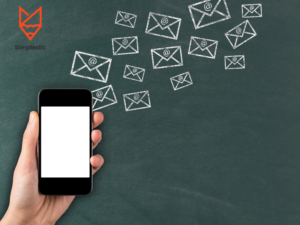Writing a Welcome Email to a New Employee | Welcoming a new employee is much more than a ceremonial introduction; it is a critical component in fostering a positive workplace culture and affirming the new team member’s role in your organization. In this practical guide, we’ll explore the significance of the welcome email and offer clear directives on crafting an authentic and engaging message that warmly ushers your new employee into the fold.
The Importance of a Welcome Email in Employee Onboarding
The onboarding process is instrumental in integrating a new employee into the company. A welcome email serves as an initial touchpoint that can set the stage for a productive and harmonious tenure. It is not merely an introduction but a foundational communication that can help a newcomer feel valued and prepared.
A well-framed welcome email ideally performs the following functions:
- Demonstrates enthusiasm: Conveys the company’s excitement about the employee’s decision to join the team.
- Provides reassurance: Acts as an affirmation of the new hire’s potential contribution.
- Highlights a support structure: Introduces the team and organizational resources available to support their transition.
- Sets expectations: Outlines what the new employee can expect on their first day and initial period of employment.
Crafting Your Welcome Email
When drafting a welcome email, the content should be both informative and engaging. Please consider the following structure to ensure your message is comprehensive and compelling:
Subject Line
Keep it straightforward and encouraging. For example, “Welcome to [Company Name], [Employee’s Name]!”
In the context of writing a welcome email for a new employee, it is essential to be mindful of your approach to the opening and closing elements of your message. The greeting should set a professional but welcoming tone, while the sign-off should leave the recipient with a sense of inclusion and anticipation. Additionally, the email title is crucial as it is the first element the recipient will see and sets the expectation for the email’s content. Below are examples that encapsulate these components effectively:
- Subject: “Welcome to the Team, [Employee’s Name]!”
- Subject: “A Warm Welcome to [Company Name]”
- Subject: “[Employee’s Name], Ready to Begin Your Journey with Us?”
- Subject: “Your New Adventure at [Company Name] Starts Now!”
- Subject: “Exciting Times Ahead! Welcome, [Employee’s Name]!”
- Subject: “Joining the [Company Name] Family”
- Subject: “Start Your Success Story at [Company Name]”
- Subject: “Onward and Upward: Welcome to Our Team!”
- Subject: “[Employee’s Name], Welcome Aboard!”
- Subject: “[Employee’s Name], [Company Name] Awaits You!”
Greeting:
Using the employee’s name in the salutation personalizes your message, for instance, “Dear [Employee’s Name],”
- “Dear [Employee’s Name],”
- “Hello [Employee’s Name],”
- “Greetings [Employee’s Name],”
- “Welcome [Employee’s Name],”
- “Hi [Employee’s Name],”
- “Good Day [Employee’s Name],”
- “Warmest Welcome [Employee’s Name],”
- “Hello and Welcome [Employee’s Name],”
- “Good Morning/Afternoon [Employee’s Name],”
- “Welcome to the team, [Employee’s Name],”
Express your enthusiasm for their arrival. A simple “We are thrilled to have you join us!” suffices.
First Day Details
Offer specifics to eliminate any first-day anxieties:
- Meeting point and time
- Point of contact
- Documentation or items to bring
Team Introduction
Provide a brief introduction to the team they will be joining, emphasizing the collaborative culture and support system.
Company Vision
A short statement about the company’s vision and how their role contributes to the greater purpose can instill a sense of belonging.
Closing
Reiterate your anticipation of their contributions and offer any immediate contact information should they have questions prior to their start date.
Email Sign-Offs:
- “Best Regards,”
- “Sincerely,”
- “Warm Regards,”
- “Best Wishes,”
- “Looking Forward,”
- “With Anticipation,”
- “Yours Truly,”
- “Respectfully,”
- “Kind Regards,”
- “With Welcome Thoughts,”
- End with warm regards and your name and position.
Example of a Professional Welcome Email
Subject: Welcome to [Company Name], [Employee’s Name]!
Dear [Employee’s Name],
We are thrilled to have you join us at [Company Name]! Your wealth of experience in [relevant field or position] is an excellent addition to our dedicated team.
On your first day, [Name] will meet you in the [specific location] of our building at [time]. Please bring [necessary documents/items], and be prepared to embark on an exciting and prosperous journey with us.
Our team is eager to welcome you personally and support you as you get acclimated to your new role. At [Company Name], we pride ourselves on fostering innovation and collaboration as we work towards [company vision or mission statement].
Should you have any questions or need further information before [start date], please do not hesitate to reach out to [contact information].
We look forward to your valuable contributions and the shared success ahead.
Warm regards,
[Your Name]
[Your Position]
Final Thoughts Writing a Welcome Email to a New Employee
Creating a thoughtful welcome email for new employees is integral to a successful onboarding process. It sets a positive tone and helps to build an immediate connection with your company culture. By tailoring your message to reflect both the company’s values and the new employee’s role within that framework, you establish a professional yet personal rapport from the outset.
We hope this guide empowers you to craft welcome emails that not only convey the necessary details but also the heart behind your organization’s ethos. Remember, a well-executed welcome email is the first of many steps in nurturing a collaborative and engaging work environment that values each individual’s contribution.
For professionals seeking to enrich their workplace communication skills, embracing the nuances of crafting a welcome email can be a simple yet impactful step. It’s not just about good manners; it’s a strategic approach to foster anticipation, relay critical information, and affirm the new employee’s decision to grow their career with your organization.
As you perfect your onboarding communications, consider the welcome email an essential tool in your professional arsenal—one that can influence a positive work culture and pave the way for a fruitful collaboration.





